“Plazas like these will help us make Portland a more inclusive, equitable place, and help grow our small businesses and cultural destinations.”
– Jo Ann Hardesty, city commissioner
When the pandemic threatened to shutter local restaurants that didn’t have the space for patrons to safely spread out while eating and drinking, some were able to move onto the street thanks to the City of Portland’s Healthy Business permit program. Two years later and these plazas are finding a more permanent and wide-ranging role in our city.
On Friday, the Portland Bureau of Transportation (PBOT) announced a $1.2 million grant award from the American Rescue Plan to build 32,000 square feet of street plazas to encourage tourism and economic recovery downtown. This is proof that transforming car-dominated streets into people-first spaces is popular enough to outlive the era of pandemic safety protocols – and it’s another step forward in PBOT’s plan to make them permanent.
This federal money will make the temporary “Pride Plaza” on SW Harvey Milk Street between SW 13th and 11th, a permanent carfree zone, dubbed Harvey Milk Plaza, for “community gatherings, business use and public art.” PBOT says it will also create “active, green public space” from the ‘Cart Blocks’ food cart pod on SW Ankeny St between Park and 8th, to O’Bryant Square Park, which the city is working to rehabilitate from its current status as a fenced-off slab of concrete above a defunct underground parking garage.
“During this pandemic, we learned how important it is to use our outdoor public space for community members to come together,” Hardesty said in a press release Friday. “We are so grateful to the Biden Administration and our Congressional delegation members for this federal support. Plazas like these downtown will help us make Portland a more inclusive, equitable place, and help grow our small businesses and cultural destinations.”
This new plaza space will be a boon to the ‘Green Loop’ concept and will make traveling in the central city more accessible to people using active transportation. The Green Loop has had some big wins lately, especially as city leaders embraced the project at the carfree Blumenauer Bridge opening. The new carfree space downtown will add more structure to the future project, which is currently fragmented around the city.
“I am very excited to see that the city was awarded this grant. I am really looking forward to seeing an implementation that helps further the Green Loop and sets the foundation to reactivate O’Bryant Park, which has too long sat empty,” Keith Jones, Executive Director of Friends of the Green Loop, told BikePortland. “The next phase of our plans are to extend the Cart Blocks south towards their original home at Alder Street and we hope this grant can play a role in that project.”
PBOT says they’ll start construction on the Harvey Milk Plaza in early 2023, and they expect construction to be complete by next fall.
Plazas and public safety
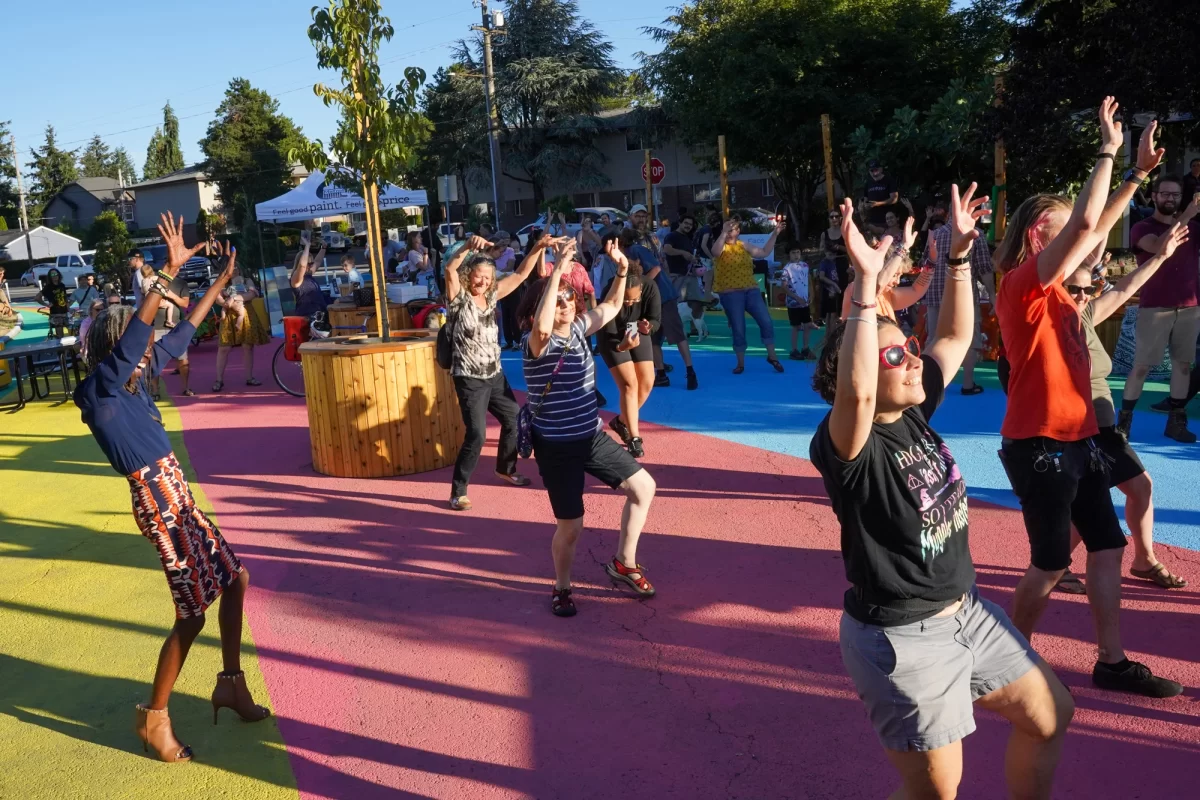
In the past two years, Portland has found that carfree spaces can be more than just places for safe dining and gathering — and that they’re needed far beyond downtown.
Inspired by the success of Commissioner Hardesty’s transformation of Arleta Triangle into a community plaza and its dual-purpose as a gun violence reduction tool, Portland Mayor Ted Wheeler has embraced carfree spaces as part of his Safer Summer PDX program. Late last month he announced the return of the Old Town Entertainment District and now the Portland Bureau of Transportation is looking to mimic the Arleta approach citywide.
PBOT Public Information Officer Dylan Rivera told BikePortland the city is currently looking at four different areas for similar street transformations in support of the Safer Summer effort: NE 82nd Ave and Milton and others in the Parkrose, Hazelwood, and Powellhurst-Gilbert neighborhoods.
Rivera said these changes might include:
- Temporary barricades and traffic diversion/slowing for immediate response as identified and agreed upon by the larger community safety team.
- Semi-permanent or permanent street improvements (lights, trees, crosswalks) or placemaking projects (like Arleta Triangle) that can be built after a lot of community engagement and neighborhood agreement.
The program has been tasked with building 2-3 projects each summer for the next three years – so, given it’s October, we won’t find out specifics about next summer’s plans for several months.
Rivera wanted to make it clear that PBOT’s work is just one part of a larger effort. “Our work enhances other gun prevention strategies so we aren’t looking to independently solve gun violence in the community.”
PBOT is clearly trying to manage expectations around their work with the mayor’s initiative. That’s probably wise. But there’s no denying the ascendant awareness in City Hall and the Portland Building that how we design and manage streets goes well beyond just transportation.



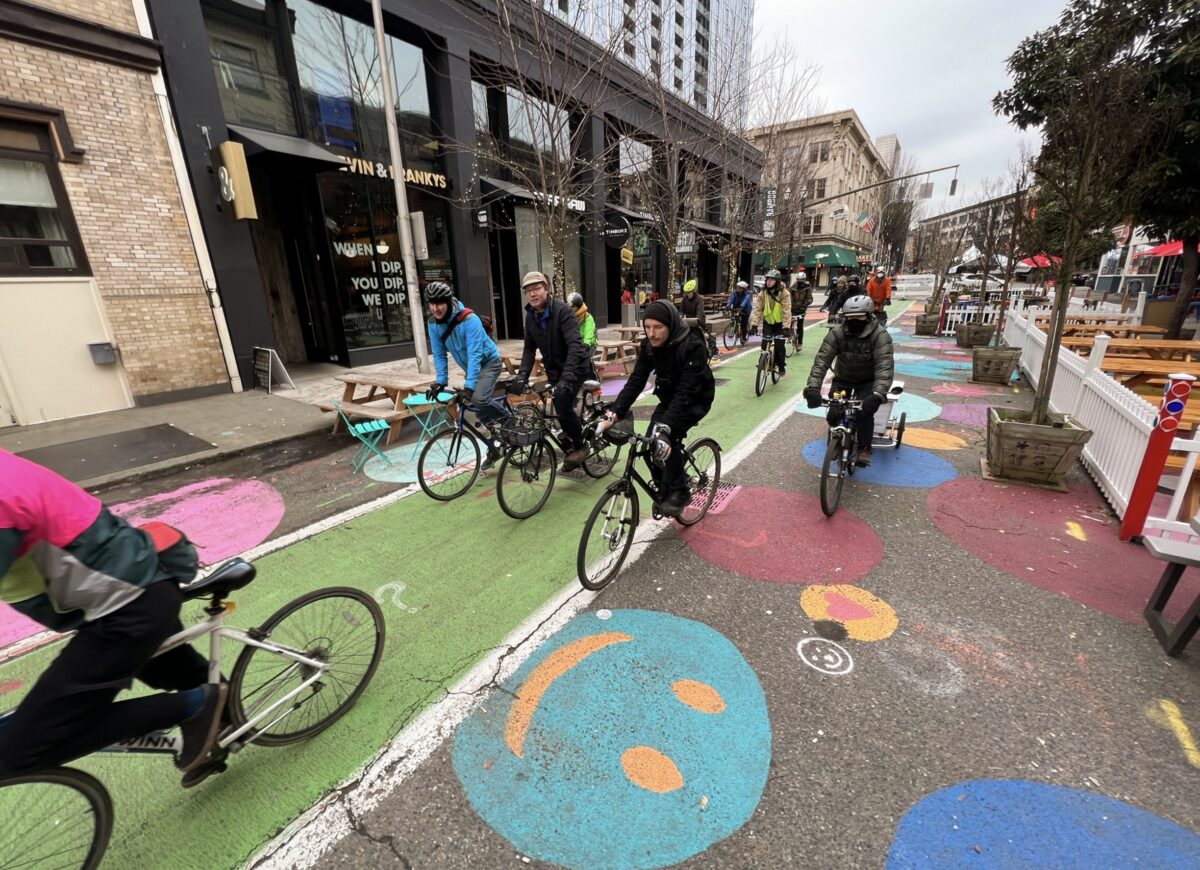


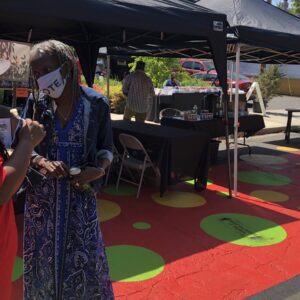
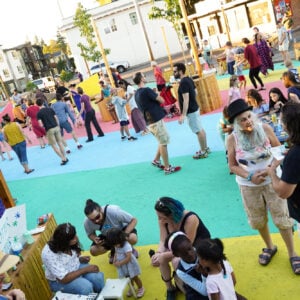
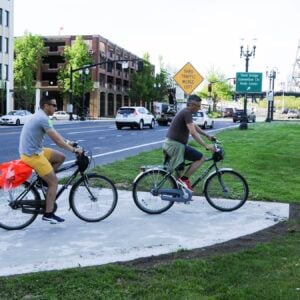
Thanks for reading.
BikePortland has served this community with independent community journalism since 2005. We rely on subscriptions from readers like you to survive. Your financial support is vital in keeping this valuable resource alive and well.
Please subscribe today to strengthen and expand our work.
Great news. With four blocks of NW 13th closed a few blocks north and O’Bryant square just two blocks away at the SE end, it’s easy to imagine a continuous car-free stretch between O’Bryant square and NW Irving. No need to get ahead of ourselves, since activating car free zones is crucial. But since those sections are so short it seems all but inevitable they will eventually be car free, perhaps as adjacent blocks are redeveloped.
I take issue with this characterization:
“O’Bryant Square Park, which the city is working to rehabilitate from its current status as a fenced-off slab of concrete above a defunct underground parking garage.”
This sqyuare is a pretty well-designed urban plaza: It includes raised planters, a nice collection of trees, a water fountain, durable, brick paving, and a public restroom. The City badly neglected this plaza and this whole part of town. If they had taken care of the plantings, the restroom and provided some programming, this could be cherished plaza. This space is so much nicer thana closed off street where tables are set up on crumbling, painted asphalt and a port-a-potty may or may not be available. This plaza is in terrible repair, and it has some serious issues with accessibility, but it is much more than fenced off slab of concrete.
Hi Max, I understand your concern! Since the park has been closed off to the public for some time now I was describing its current state. I agree with you that it could be a cherished plaza and hope the city plans to make renovations to it with the federal funding. My description is just meant to indicate it is currently out of commission.
You’re both right. I used to work across the street from the square, and it was a very popular spot for people to take their cart food and enjoy nice weather. There was usually a musical busker nearby. And in certain seasons, it was where the huge gatherings of crows would go. I loved listening to the cacophony of caws. It is a very nice place. I hope it survives whatever happens to the garage in the end.
The Harvey Milk Plaza news is great. I’d like to see many more small plazas/car-free areas like that, SW Ankeny between 2nd and 3rd, etc.
Downtown has a surprising number of major outdoor spaces–Pioneer Square, the North and South Park Blocks, Waterfront Park, Chapman Square, Lownsdale Square, Terry Schrunk Plaza, Keller Fountain, Director Park, O’Bryant Square, Jamison Square… All of these share a common, really major flaw–they’re cut off from the buildings around them on every or almost every side by by vehicle streets. It’s a horrible compromise in that it eliminates the direct relationship/access between the space and the people in buildings around them.
In contrast, the small plazas can be much more vibrant with restaurant seating spilling into the space, people crossing from one building to another, etc. Many people here, who are used to the well-known, isolated full-block plazas and parks, may be shocked at how great plazas can be once they experience a downtown with several of the new, small-but-not-isolated plazas.
One other thing–with plazas and parks surrounded by vehicle streets, while people driving obviously don’t get the experience of being in the middle of the space, they get to at least see the whole space from every side. When plazas are NOT surrounded by streets, they become more special–places you at most just get a glimpse into while driving past at an end that’s open to a street. The real experience of seeing and experiencing the plaza is reserved for people who walk or bike into it, making the experience much more special. Of course being surrounded on two or more sides by buildings instead of traffic and its associated noise and commotion adds to the feeling of being in a special space.
I’m not sure the Arleta triangle was some shooting gallery. Strange that the city and Hardesty wants to hang their hat on that. Before the change the area was used for camping and RV’s. Hopefully the public will see that this idea of closing access to streets in the name to reduce violence is a reach. I literally see the Milk Plaza daily with very few people using it. Is it’s usage at 20% off the time a win? Oh, I also go by the Arleta triangle every other day and see a similiar situation. It could be successful if there was a catchy, hipster cafe there. Instead there is a pizza joint that never seems busy. Cutting access could stop
Drivebys but it certainly doesn’t stop stabbing and that seems to be the theme in Old Town/ The Pearl.